AP Workflow Process: A High-Level Roadmap to Better Accounting

Accounts Payable can be frustrating.
Every day, invoices arrive via snail mail, email or even instant messenger and fax. Your AP team needs to process every one of those invoices, verify them, and send them on for approval and payment.
It sounds simple, but a lot can go wrong.
Mistakes happen. Invoices get entered incorrectly, approval emails get lost, and payments are late or, even worse, incorrect.
And with 80% of companies reporting in 2023 they expect the volume of invoices to increase, and almost half saying invoices are getting more complex, the problem isn’t going away on its own.
With that in mind, isn’t it surprising that 45% of those companies said they also expect their Days Payable Outstanding to increase?
Errors, bottlenecks, and obstacles in the accounts payable workflow directly impact the efficiency and effectiveness of your AP department. When key processes don’t flow smoothly, it can lead to delays, missed or duplicate payments, wasted time – and a lot of frustration for stakeholders.
Having a good accounts payable workflow makes all the difference. An AP workflow outlines exactly what everyone in the Procure-to-Pay process needs to do when an invoice arrives and moves through to payment. But what does a good AP workflow look like?
Join us as we look at the basics of the accounts payable workflow, why having a workflow is important, and how automation can optimize the workflow to make it more efficient.
What is the Account Payable workflow?
I’m the financial director for a growing city in the Midwest. My main job is balancing two priorities: ensuring taxpayers’ dollars are being spent efficiently and that our growing city’s financial operations can be scaled up to handle ever-increasing responsibilities. My current task is building a workflow for our accounts payable processes. Our current manual workflow is slow and inefficient. We’re falling behind in paying our vendors, and as a result, we’re facing significant costs from late payment fees, errors, and fraud.
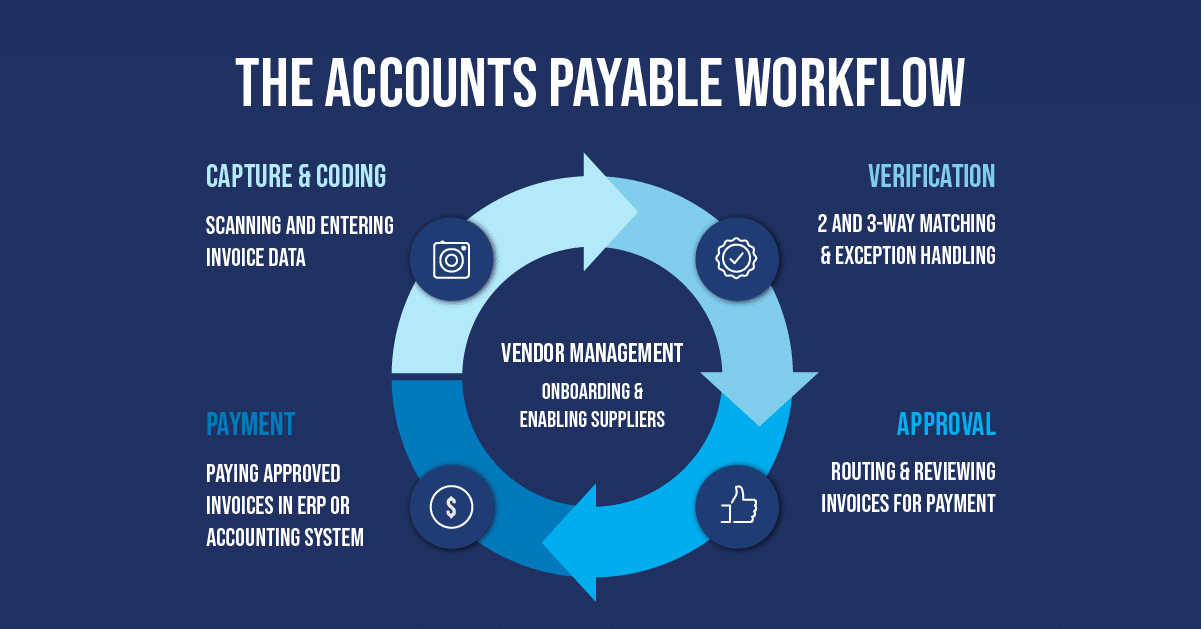
The accounts payable workflow lists the steps our finance team follows every time the City receives an invoice from a supplier. It’s an end-to-end process from procurement to payment (P2P), including invoice processing, verification, approval, and payment tasks. Building an effective workflow means knowing and understanding each step of the P2P process and how it can be optimized and managed.
Why is the Accounts Payable workflow important?
The AP workflow boils down to efficiency, transparency, and accountability. The more efficient our workflow is, the easier it will be to process invoices and the faster we can pay our suppliers. Transparency means we have visibility into every transaction and can detect and mitigate errors, fraud, and duplicate invoices before we pay them.
It also means we can access and use transaction data to analyze and forecast our spending to make informed procurement decisions. Finally, accountability means we know who is responsible for each task and have proper segregation of duties in place to prevent fraud.

Streamlining and optimizing our workflow ensures we’re spending taxpayers’ dollars responsibly by reducing fraud, errors, and late payment fees and ensuring our AP processes are efficient and cost-effective.
Here are some key reasons we want a more comprehensive AP workflow.
Reducing human error
We receive invoices by regular mail and email. Unfortunately, they don’t always go to the same addresses. Invoices go missing or are received late, making us fall behind on supplier payments.
We also rely on manual data entry as our AP team manually enters every invoice into our ERP system. The manual process is error-prone and slow.
As I said, our city is growing rapidly, and so is our spending with suppliers. I’m concerned that we’ll fall further behind on payments as the volume of invoices increases. And since late payments lead to late fees and unhappy suppliers, I’d like to deal with this problem before it gets bigger. Implementing an AP workflow with designated addresses for invoices and clear data entry procedures will make the process much easier.
Improving scalability
It’s great to be a growing city, but growth brings challenges, especially around our AP processes. I’ve already mentioned the increase in our volume of invoices. Another issue is that our invoices are getting more complex, especially for large scale infrastructure projects with multiple contractors.
Keeping track of project costs is a priority for us, so we need to improve our invoice verification and payments processes to make them more efficient and accurate. We also need to look at solutions, such as AP automation, to make these processes more scalable.
Faster and more cost-effective workflows
Handling physical documents is expensive. Paper invoices, receipts, and purchase orders need to be managed and stored – a challenge when office space is already at a premium at City Hall. But the bigger problem is that unorganized AP processes are expensive to operate. Manually scanning and entering invoices is time-consuming and inefficient. And as invoice volumes grow, we can’t easily scale up our AP team to handle the extra work.
Adding people moves the bottlenecks. For example, today all our invoices go to our chief administrative officer (CAO) for approval. If I add extra AP staff to handle the larger volume of invoices, there will still be a bottleneck at the approval level because our CAO can only process a certain amount of invoices.
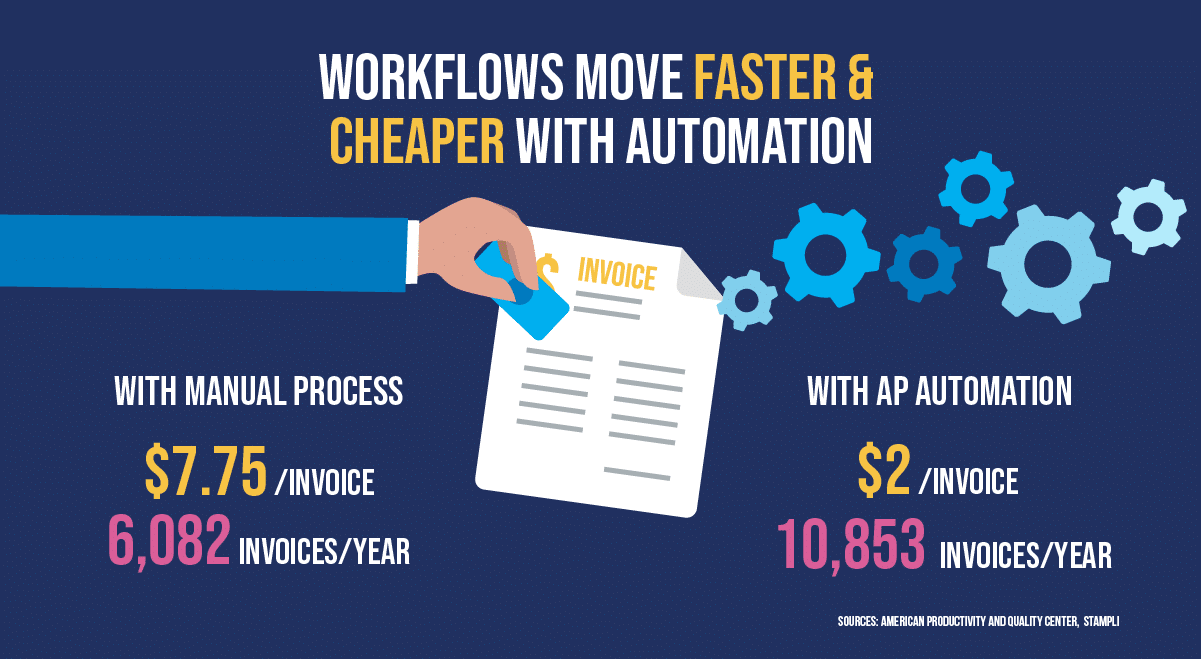
Creating an efficient AP workflow can make these processes more efficient by helping us identify and address bottlenecks and obstacles in our current P2P processes. For example, we could build a workflow that establishes multiple approval levels for different invoice values to reduce the approval bottleneck. The key is maximizing processing efficiency – which brings us to manual vs. automated AP workflows.
Manual vs. automated Accounts Payable workflows
In a nutshell, manual AP workflows are ok, up to a point. We used a manual AP workflow for years with no problems before the city began to grow. When we brought on an ERP system to handle our finance and accounting operations, we moved AP to our current semi-automated workflow.
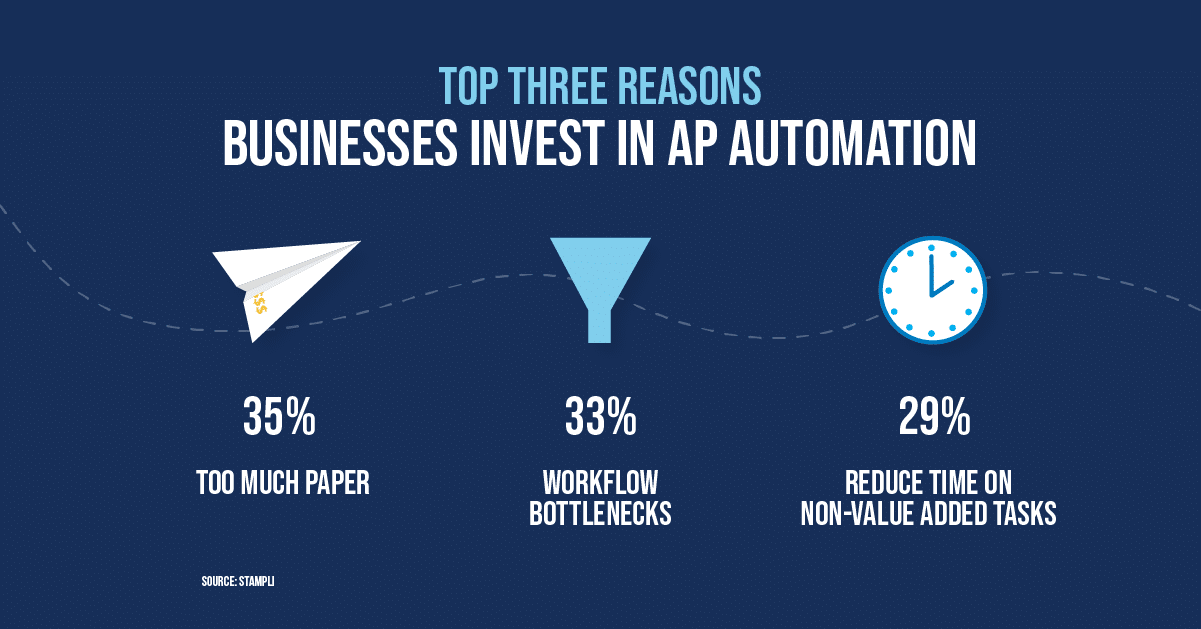
Today, our AP team manually enters, codes, and verifies vendor invoices and then enters them into our ERP system for approval and payment. This process has worked for years, but with our rapid growth, we’re hitting bottlenecks. We’re considering implementing an accounts payable automation solution that automates our remaining manual processes and provides a streamlined end-to-end workflow from invoice receipt to payment. As part of that process, we’re revamping our AP workflows and policies to make them more efficient.
Let’s look closer at the workflows we’re using today and how we plan to improve them.
The basic Accounts Payable process
Our Accounts Payable department follows a basic four-step workflow to process each invoice that comes in the door. The actual process is a bit more complicated, but here’s the high-level picture:
Step 1: Invoice capture and coding
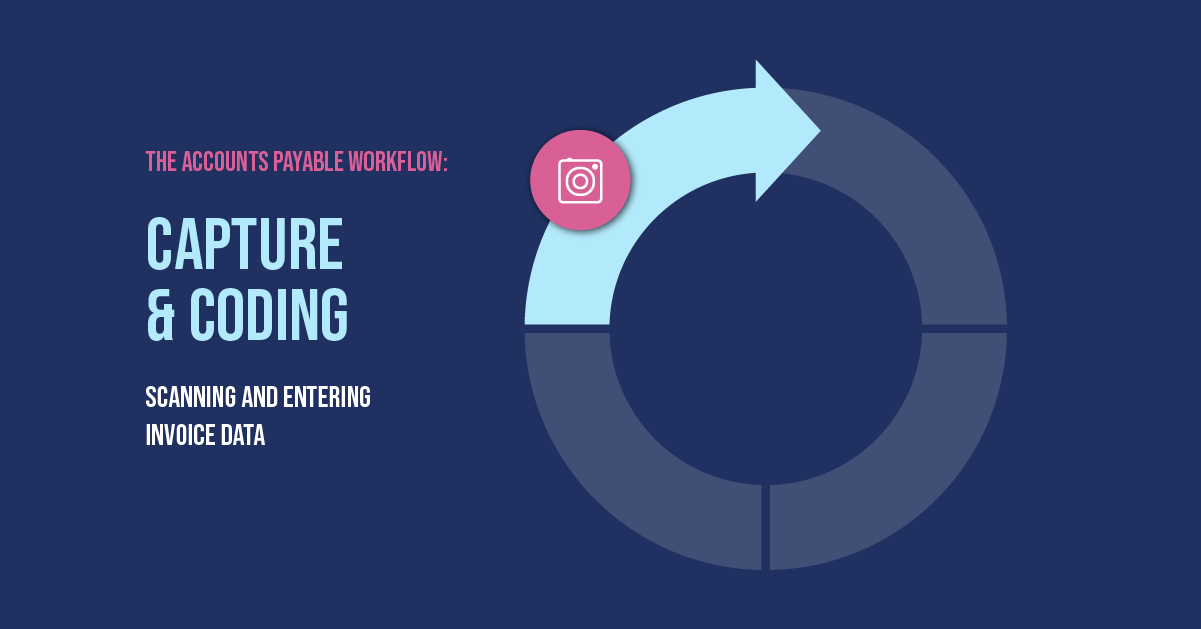
As I mentioned, we get supplier invoices through snail mail and email today. When an invoice arrives at our AP department, an AP clerk keys the invoice data (invoice number, vendor name, line items, prices, amount due, taxes, and payment terms) into our connected ERP accounting system. For more complicated transactions, such as invoices covering multiple POs and partial invoices, the AP clerk will track down the relevant transaction information in our ERP.
Automated invoice processing
AP automation software incorporating optical character recognition (OCR) and machine learning can scan, GL-code, and digitize paper and PDF invoices as soon as they are received. The automated system also provides a single email address where vendors can send their invoices, which solves the problem of lost or delayed invoices.
Step 2: Invoice verification
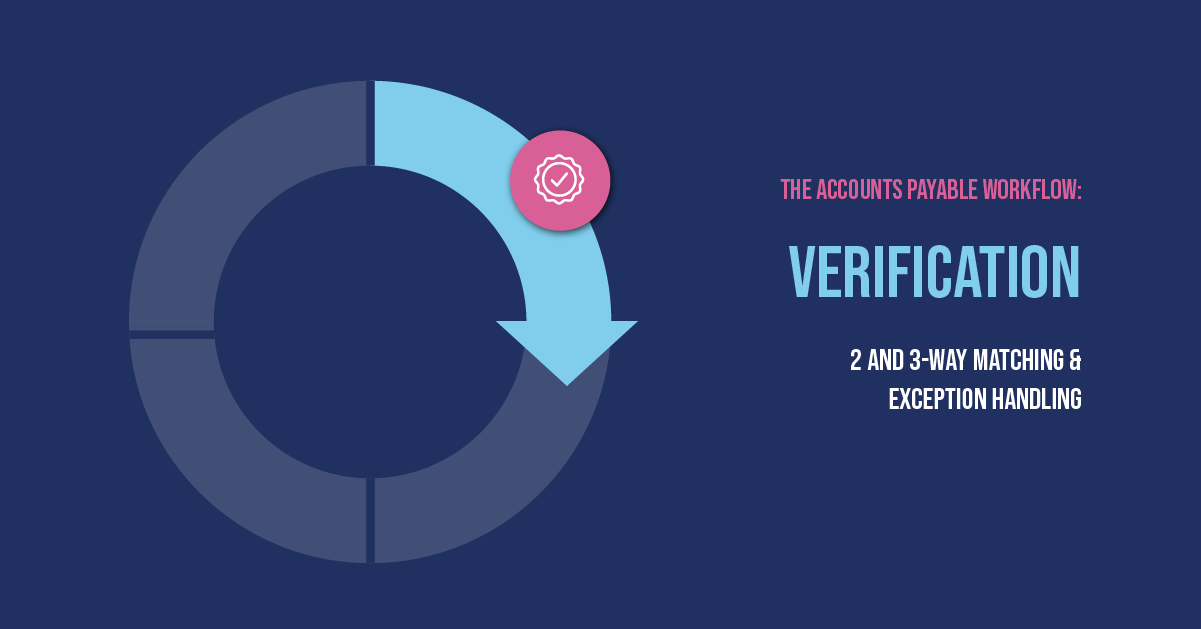
After the AP clerk enters the invoice data into our ERP, they must confirm the invoice details to verify that it’s for a valid purchase. We do this through three-way matching – comparing the invoice data with the purchase order (PO) and shipping receipt.
Usually, the PO and receipt are also in our ERP, so the clerk can quickly verify the invoice. However, in cases where one of the documents is missing or if there’s a mismatch, the clerk needs to investigate further.
Depending on the problem, the investigation can take a long time.
For example, if we need to physically confirm a shipment has arrived, we may need to send someone to a municipal garage or worksite. Because the verification process can be so slow, we usually only verify invoices above a certain cost threshold or for transactions where we’ve seen fraudulent invoices in the past.
Automated three-way matching
Accounts payable workflow automation integrated with our ERP can automatically perform real-time 3-way matching on every invoice we receive. If the system detects a mismatch (or missing document), it flags our AP team, who can communicate with other teams through the AP solution dashboard. It doesn’t solve the problem of needing to investigate mismatches, but checking every invoice does let us get a better handle on how mismatches are happening. Armed with this info, we can correct the problem at the source by changing our procurement policies or speaking to the vendor.
Step 3: Invoice approval process
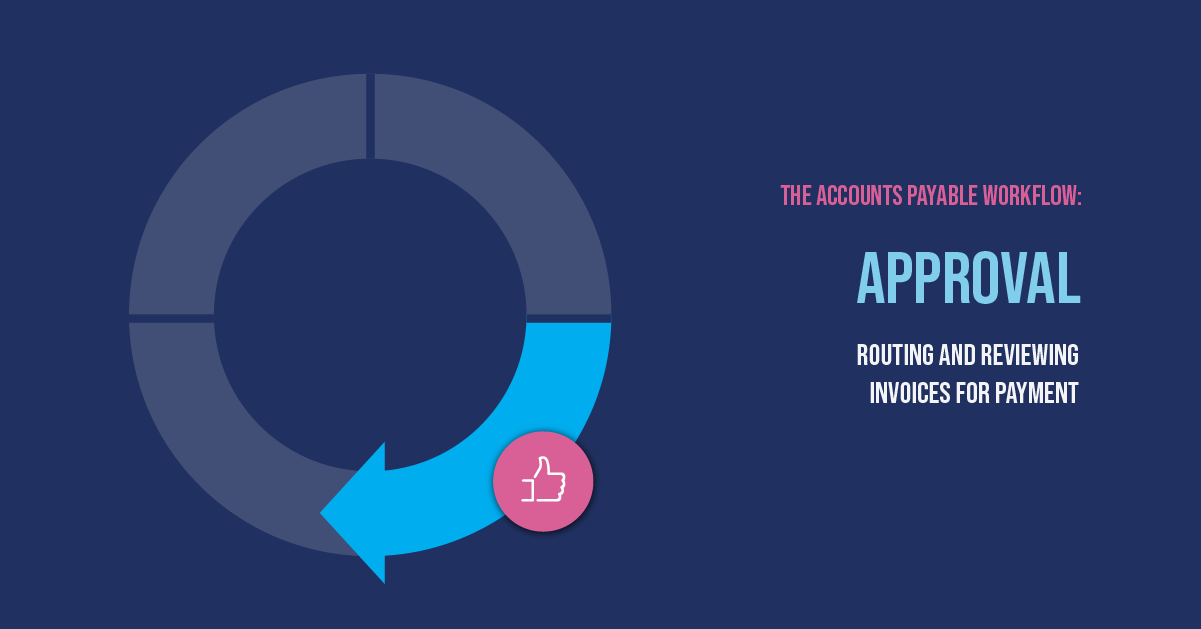
Once our AP team verifies the invoice, they route it for approval. Currently all our vendor approval requests go to our CAO by email, and our CAO reviews and approves the invoices in our ERP.
In practice, the CAO is supposed to approve or reject invoices based on approval criteria such as errors or disallowed expenses, In reality, our CAO is so overworked right now that they are approving almost everything AP sends them. Of course, this puts pressure on our AP team to ensure the invoices are properly verified before they send them for approval, which slows the entire process down.
We need to redesign the approval workflow to reduce the pressure on our CAO. We can do this by adding approvers, setting approval thresholds, and improving our invoice verification process, but the problem remains that all those invoices will land on someone’s desk.
Automated invoice approvals
AP workflow automation can automate invoice approval routing, workflows, and communications to make the approval process simpler and faster. For example, the accounts payable software can automatically route an invoice to the right approver based on the invoice amount or vendor type and send reminder messages if the approver doesn’t sign off within a specific time. If the approver has any questions, they can communicate with AP and other stakeholders through the AP solution dashboard.
Step 4: Payment processing
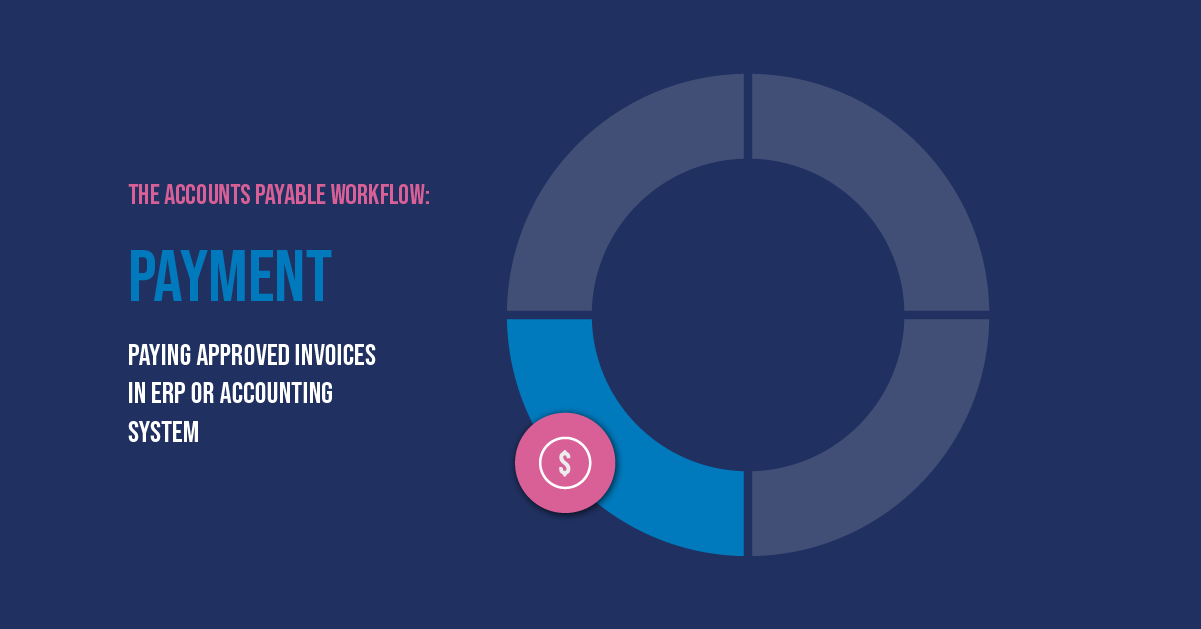
After the approver signs off on the invoice, it can move into the payment process. We manage our supplier payments in our ERP finance module. In general, we send our payments in batches to simplify the process. Our AP department starts the payment process by setting up a payment run consisting of the approved and unpaid invoices in the system.
The batch process involves preparing and aggregating invoices in the ERP, then sorting them by payment method. We usually run two batches: a check run for vendors paid by check and an ACH run for vendors we pay via EFT. We also have a few miscellaneous vendors we pay by wire transfer or credit card. Once a batch is ready, our AP team gets approval from our controller before sending it.
Our payment process has a few problems:
- Even though we’re using our ERP, the process is still quite manual, especially when we’re dealing with complex payments like partial invoices.
- We print our checks, which is time-consuming and increases the risk of fraud.
- Checks are expensive, but we don’t have an easy way to move vendors to EFT payments.
We can build a payments workflow to address some of these concerns, but the bottom line is our payment processing isn’t as automatic as we’d like it to be.
Automated payment processing
Electronic payments are less complicated and expensive than traditional checks. An AP automation solution with integrated payment processing and vendor management makes switching suppliers to electronic payments easy. Payment automation also streamlines manual payment runs, bringing all payment methods onto a single platform. Payment solutions can also sync with our ERP, letting us move away from our ERP payment system if needed.
Bonus Step: Vendor management
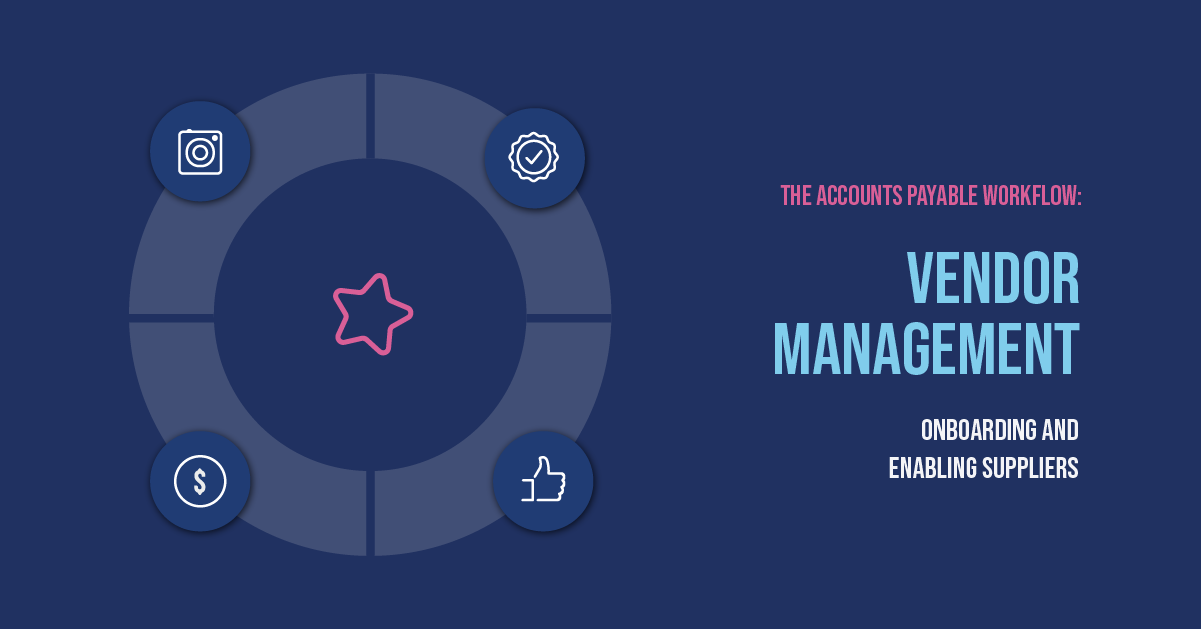
Although it’s not a “step” in our AP workflow process, vendor management is central to our accounts payable department. We want to enjoy positive relationships with our vendors, many of whom are local business owners. We want the process of onboarding, maintaining, and paying vendors to be as efficient as possible.
Currently, our AP and procurement teams manually onboard new vendors by sending them an email asking for their information (address, payment method, credit terms). Once the vendor replies, we create a new vendor record in our ERP and start doing business with them. Ongoing vendor management is also manual. We use spreadsheets alongside our ERP to track vendor information like contract renewal dates, required documentation, and contact information. As our pool of vendors grows, this method is becoming hard to manage.
We need to redesign our vendor management workflow to streamline onboarding and have a central location for vendor information. We also need to centralize vendor communications so messages are not missed or forgotten.
Automated vendor management
AP automation solutions with automated vendor management functionality simplify onboarding and vendor documentation management. Platforms like Stampli also include vendor portals where vendors can communicate directly with AP, Procurement, and other internal departments. For example, an advanced vendor management solution can automate obtaining required documents (insurance certificates, licenses) from vendors, storing them, and notifying AP when the documents are expiring.
Tips & tricks for improving your AP workflow
Now that we know the benefits of building a comprehensive AP workflow and where AP automation can help streamline and optimize your business processes, let’s look at things you can do to improve your current workflow.
Centralize communications
The biggest bang for your buck in optimizing your AP workflow is improving how stakeholders communicate. Implement a centralized communications policy instead of relying on emails, phone calls, text messages, and water cooler conversations.
This is an area where AP automation really shines. By moving communications to a central platform and dashboard, you can be sure communications won’t get missed, and you’ll have a record of every communication about every invoice.
Look to ERP integration
Modern AP automation solutions integrate with ERP systems to share data and communications. This ensures everyone is working from the same data and prevents miscommunication.
Strengthen internal controls
Manual AP processes like invoice verification and check processing are vulnerable to fraudulent activity by employees and others. Implement controls like segregation of duties to protect against fraud and errors. AP automation solutions are an excellent way to automatically enforce controls and keep a complete audit trail.
How Stampli can help to improve your AP workflow process
Stampli is the best way for your business to optimize your accounts payable workflow. Recognized by G2 as the industry leader in Delivering Results, Customer Relationships, Implementation, and Usability, Stampli is powerful, simple to implement, and seamlessly integrates with major ERPs and accounting systems.
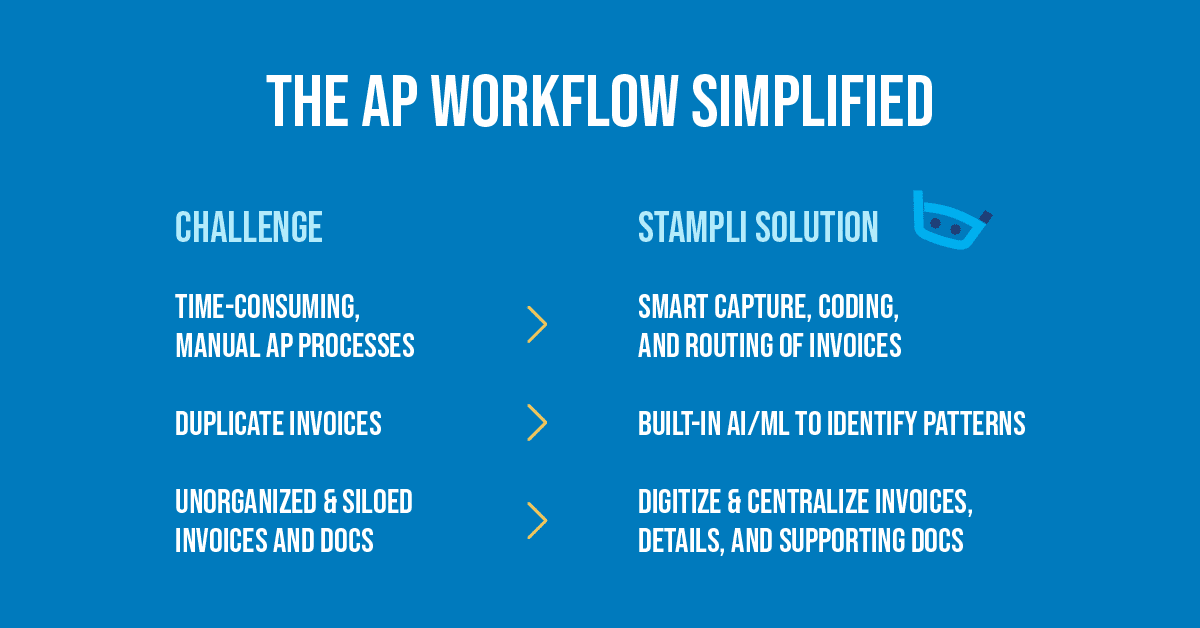
Stampli’s no-code implementation allows for quick adoption in a matter of weeks, not months. With minimal disruptions to your existing processes, you can immediately see the impact of AP automation on your bottom line.
Take the first step today. Contact Stampli to set up a free demo.
